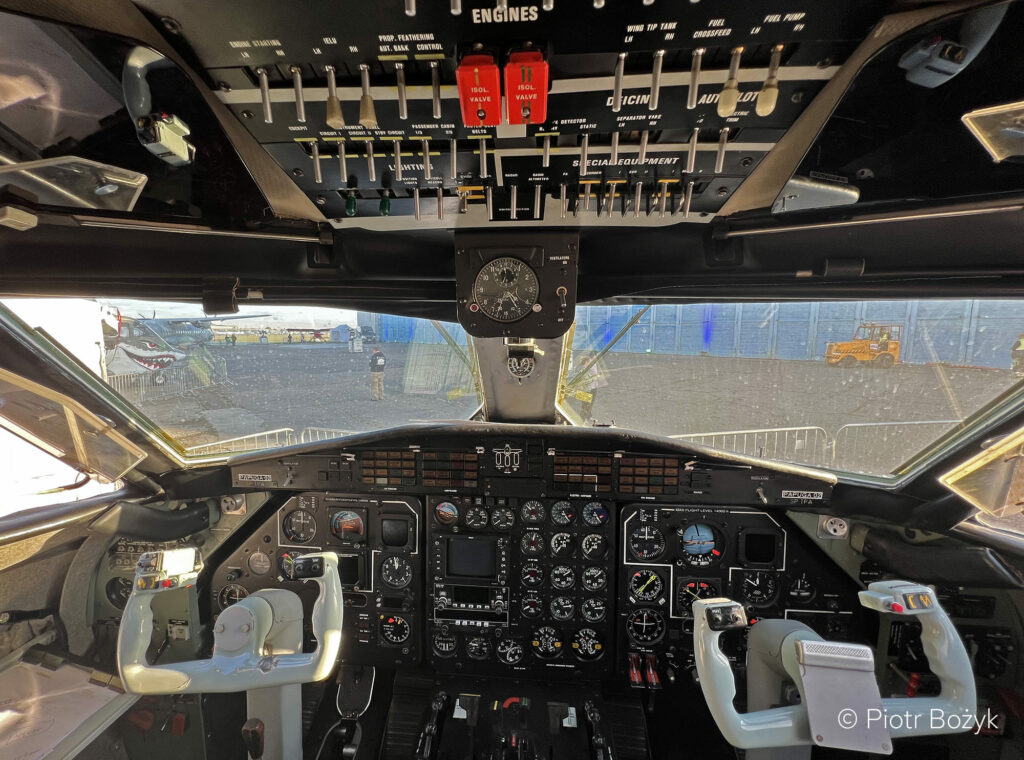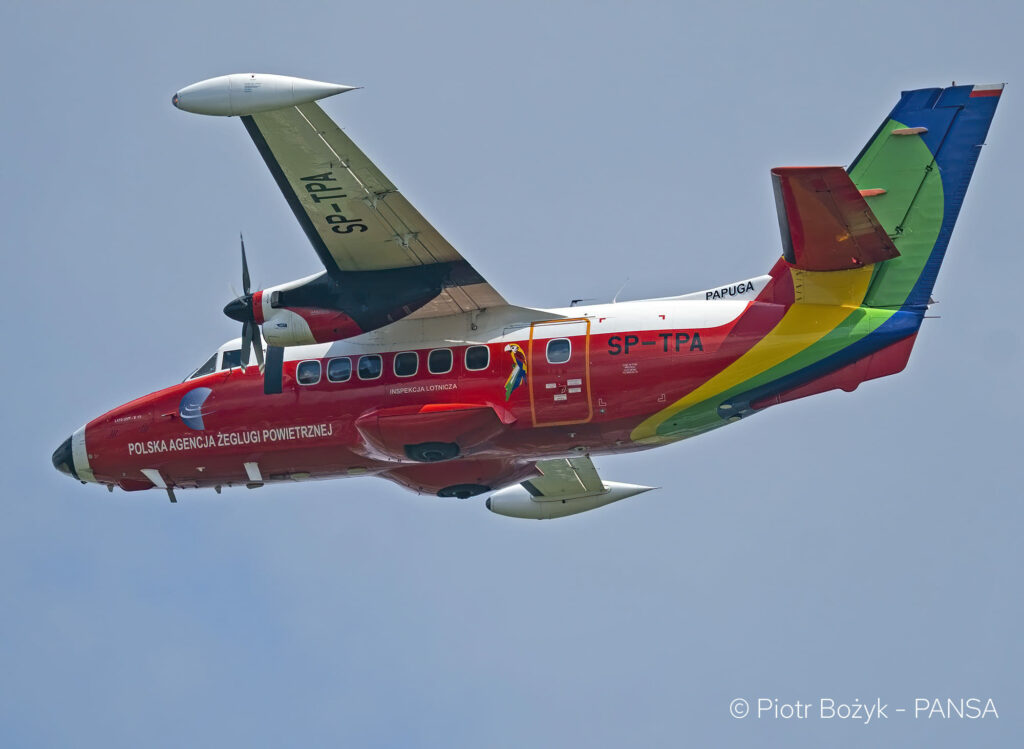It’s the end of the Turbolet era at the Polish Air Navigation Services Agency (PANSA). After 34 years, on Wednesday February 22, the LET L-410 Turbolet “Parrot” aircraft with registration SP-TPA left the fleet of the PANSA’s Flight Inspection forever, ending an interesting and beautiful history.
SP-TPA flies to Czech Republic
The plane departed from Chopin Airport for Brno, with a new registration, but still partially remaining in the striking colors of “Parrot”. The aircraft finished its service in a jubilee year for the PANSA Flight Inspection – 2023 is the 60th anniversary of the service.
The aircraft flew 9872 hours, which translated into a total of 5927 cycles. The first technical flight at the manufacturer factory was made on September 21, 1989.


Number one flight for the Flight Inspection took place on November 30, 1989. LET L-410 carried out its last inspection mission on May 12, 2021, under the command of Capt. Jaroslaw Rozwód.
The sister aircraft SP-TPB flew 6,407 hours, which translated into a total of 4,363 cycles. The turbojet was decommissioned and sold in 2016.
Both aircraft flew a combined 16,279 hours during their time in service at PANSA, which will translate into 10,290 cycles.
In recent weeks, the aircraft was taken back by its new owner and extracted from the Polish aircraft register and registered in the Czech register.


Its new registration marks are OK-TPA. Prior to the technical flight to Brno, Aeroservis s.r.o. employees carried out the technical inspection necessary for the flight for several days.
The Czech Civil Aviation Administration (Úřad Pro Civilní Letectví) issued a permit for a one-time technical flight (Permit to Fly), allowing the plane to be ferried.
The document describes in detail the rules for its execution, in the case of an aircraft that does not meet all the conditions required by airworthiness regulations.
On February 21, 2023, a Czech inspector inspected the aircraft and signed the document, which was prepared three weeks ago.
History of PANSA Flight Inspection Turbolets
In the second half of the 1980s, operational wear and tear, maintenance problems and access to spare parts and B-70 aviation gasoline at Warsaw Airport became problematic.
There was an urgent need to replace the Ilyushin Il-14-type “Parrots” used in aviation inspection with modern turboprop-powered aircraft.
The choice at that time fell on LET L-410 Turbolet, manufactured in what was then Czechoslovakia. The first Polish company to purchase L-410 UVP-E Turbolet aircraft in 1988 was AEROPOL from Warsaw, based at Bemowo airport.
A year later, in 1989, two Turbolet aircrafts went to the flight inspection service functioning within the structure of the State Enterprise “Airports”. New aircrafts received the registration marks SP-TPA and SP-TPB. The currency of the transaction was transfer roubles.


Onboard modifications
Both Turbolets were modified. They were equipped with autopilot installations, EGPWS and TCAS II systems. The L410 aircraft, as well as the Beechcraft currently in service, served as a platform carrying an aerial control system on board, used mainly for the control of radio-navigation equipment.
The first systems built aboard the L410 were the ASI and SIERRA systems, which were replaced by the CFIS-1 system designed by CAS with the cooperation of flight inspectors and an avionics engineer in the Air Operations Department.
The replaced aerial inspection systems were single units that could be transferred from one aircraft to another within a few working days. Obviously, this was not a convenient solution.
So after the decision was made to purchase a new aerial control system, it was decided to purchase two independent AD-AFIS-130 systems from the German company Aerodata.
One of these systems, dismantled from the SP-TPB aircraft, was built aboard Beechcraft’s SP-TPU and is still the primary tool for aerial inspection. The system once serving from aboard the SP-TPA is awaiting a second aircraft to appear in the PANSA’s Inspection fleet.

Searching for a modern plane
In 2012, the Polish Air Navigation Services Agency decided to replace the “Parrot” L-410 Turbolet, with new survey aircraft.
The decision was influenced, among other things, by the wear and tear of the aircraft, increasing problems with access to spare parts for this type of aircraft, which has been out of production for years.
This translated into ever-increasing prices, long waiting periods for delivery, reaching up to 9 months, and poor quality.
In addition, the Turbolets, due to their relatively poor on-board equipment and lack of a Flight Management System (FMS), were unable to perform flights associated with the validation of newly designed navigation procedures, such as SID and STAR.
After the PANSA purchased the Beechcraft Super King Air B350i aircraft, the first Turbolet (SP-TPB) was sold in 2016. The aircraft was purchased by the Czech company Aeroservis, registering it as OK-TPB.
Polish Flight Inspection
The PANSA Flight Inspection has been in existence since 1963. Its tasks include: Inspection of airport ground equipment and validation of instrumental flight procedures.
PANSA’s Flight Inspection fleet currently consists of one Beechcraft Super King Air 350i (SP-TPU).









